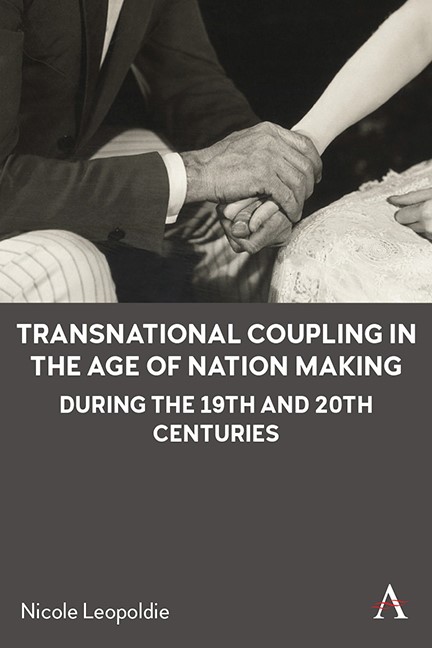Book contents
- Frontmatter
- Contents
- List of Figures
- Acknowledgements
- Introduction Marriage: National Borders and Personal Spaces
- Part I “Trading Titles for Treasure?”: Elite Marriages during the Nineteenth Century
- Part II “Paris is Free—and So Are Its Kisses”: Wartime Marriages during the Twentieth Century
- Conclusion
- Bibliography
- Index
Part II - “Paris is Free—and So Are Its Kisses”: Wartime Marriages during the Twentieth Century
Published online by Cambridge University Press: 15 November 2023
- Frontmatter
- Contents
- List of Figures
- Acknowledgements
- Introduction Marriage: National Borders and Personal Spaces
- Part I “Trading Titles for Treasure?”: Elite Marriages during the Nineteenth Century
- Part II “Paris is Free—and So Are Its Kisses”: Wartime Marriages during the Twentieth Century
- Conclusion
- Bibliography
- Index
Summary
In the first part of this work, I examined the ways in which marriages emerged out of cross-cultural encounter within elite transnational communities during the nineteenth century and the extent to which the cultural and emotional dynamics of those communities facilitated those unions. In this second part, I examine twentieth-century Franco-American marriages that occurred when national borders were most solidified—during and between the world wars. Unlike those discussed in the first part, wartime-marriage participants were no longer members of an elite, transnational social network that effortlessly carved out an existence and moved freely beyond national boundaries but were instead local women restricted by the conflict around them and soldiers who acted as representatives of a nation-state and moved only insofar as the military regulations allowed. Yet, despite encountering one another during a period of heightened boundary-making and hyper-nationalism, these men and women still managed to construct families that transcended those national limits in far greater numbers than the Franco-American marriages of the nineteenth century. In 1919, the Literary Digest, a weekly American magazine explained that “[s]o many of the American soldiers in France [had] married French girls that an official pamphlet [had to be] issued setting out the legal requirements governing marriage in that country.” Likewise, in a March 7, 1918 memo to the Adjutant General, one commanding general complained that 350 marriages to French women had taken place in his division alone in a period of only seven months. At the war’s end, American military newspaper Stars and Stripes estimated that 6,000 or more Franco-American marriages had been registered in town halls across France and speculated that many more went uncounted by authorities. Just after records of the American and European militaries, on which these studies are largely based, not only overemphasize the nation-state but also rarely detail the personal motivations or emotional expectations of marriage participants.
Therefore, while these matrimonial stories cannot be completely separated from the conflicts that facilitated them, what follows is not an account of war. It is instead an account of encounter. As in the first part, the central question rests on the cultural and emotional dimensions of Franco-American interaction; however, in the absence of elite transnational social networks like those that produced titled marriages during the previous century, this part seeks to locate new transnational spaces that were created by the war and map them accordingly.
- Type
- Chapter
- Information
- Publisher: Anthem PressPrint publication year: 2023

